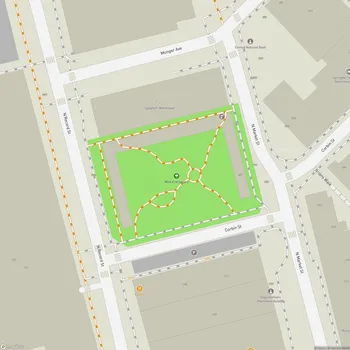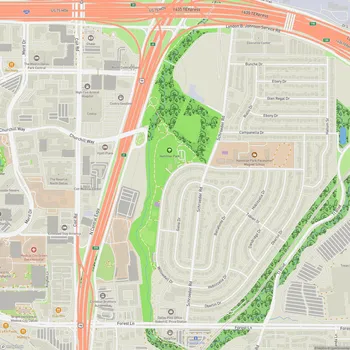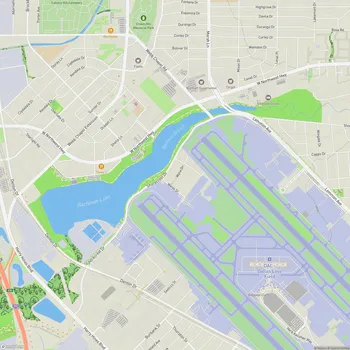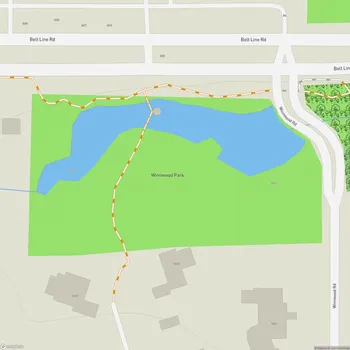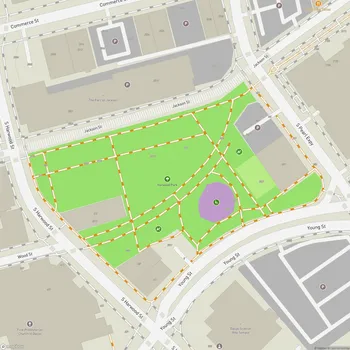Dealey Plaza
Interactive Park Map
About Dealey Plaza
Where Dallas Began
Situated in downtown Dallas' West End Historic District, Dealey Plaza is a living piece of Texas history. Spanning about 15 acres, this urban park isn't just any green space - it's the birthplace of Dallas itself, marking where the city's story first began.
Completed in 1940 as part of the Works Progress Administration, the plaza honors George Bannerman Dealey, the influential early publisher of The Dallas Morning News. Dealey wasn't just about newspapers, however - he helped establish Southern Methodist University and even convinced the Federal Reserve to open a Dallas branch. Pretty impressive resume, right?

The Plaza Layout
What makes Dealey Plaza architecturally interesting is how it sits at the meeting point of three major streets - Main Street, Elm Street, and Commerce Street - all passing under what locals call the "triple underpass" railroad bridge.
The plaza feels somewhat enclosed, with buildings at least 100 feet tall bordering three sides. The most notable of these is the former Texas School Book Depository, now home to the Sixth Floor Museum.
Wandering through, you can find a thoughtful mix of greenery and concrete structures - grassy areas, trees, and decorative fountains dot the landscape. There are several monuments honoring Dallas' early residents, and you might notice European-inspired architectural touches that give the plaza its unique character.
On the northwest side sits the infamous "grassy knoll," a small sloped area that's become part of American lexicon. Throughout the plaza, informational plaques help put everything into historical context.

A Moment That Changed History
While Dealey Plaza started as a local landmark, it tragically gained international recognition on November 22, 1963, as the site where President John F. Kennedy was assassinated. This single event transformed the plaza into a place of profound national significance.
If you visit today, you'll notice an "X" marked on Elm Street showing exactly where the presidential limousine was when Kennedy was struck. Many visitors are surprised by how close this spot is to the Texas School Book Depository - a proximity that makes the historical events feel hauntingly real.
Recognizing its importance, Dealey Plaza was designated a National Historic Landmark District in 1993, on the 30th anniversary of the assassination, ensuring its appearance and historical integrity would be preserved.

Visiting Today
Today, Dealey Plaza functions as both an urban park and a place of historical reflection. It draws visitors from around the world, many coming to process the events that unfolded here in 1963.
Much of the plaza - from street lights to signs - has been preserved to match its 1963 appearance. This creates an almost time-capsule effect, especially when you glance up to see the modern Dallas skyline beyond.
You can explore at your own pace or join guided tours for deeper historical context. For the full experience, the Sixth Floor Museum in the former Book Depository offers extensive exhibits about Kennedy's life and assassination (just note it has a separate admission fee and closes Mondays and Tuesdays).
The plaza is well-maintained and clean, ideal for photography or a thoughtful stroll. While you won't find designated picnic areas or public restrooms within the plaza itself, what you will discover is a surprisingly peaceful space in the heart of bustling downtown Dallas - a place where history feels present with every step.
All Features & Facilities
Nature & Wildlife
Visitor Services
Photo Gallery (click to enlarge)









ParkMagnet Score
Decent Park
Park Size
Opening Hours
Weather
Top Restaurants Near Dealey Plaza
Moak's Family Texas BBQ
748 feet302 N Market St, Dallas, TX 75202
Family-friendly barbecue restaurant serving authentic Texas-style brisket and smoked meats in downtown Dallas.
Family Thais Asian Bistro
748 feetat Pacific on train tracks, 208 N Market St #150, Dallas, TX 75202
Casual Thai restaurant serving authentic curries, noodles, and rice dishes from a family of six chefs.
Rj Mexican Cuisine
840 feet1701 N Market St #102, Dallas, TX 75202
Comfortable West End restaurant serving fresh Mexican fare with American and vegetarian options available.
Y.O. Ranch Steakhouse
853 feet702 Ross Ave, Dallas, TX 75202
Fine dining steakhouse featuring premium cuts including elk and bison in a Western-themed atmosphere.
Shivas Bar and Grill
0.3 miles1001 Ross Ave #132, Dallas, TX 75202
Fine dining establishment featuring Northern and Southern Indian cuisine with vegetarian options and full bar service.
Sushiya
0.4 miles1306 Elm St, Dallas, TX 75202
Casual Japanese restaurant serving fresh sushi, traditional dishes like teriyaki and udon in a friendly atmosphere.
Top Hotels Near Dealey Plaza
Courtyard Dallas Downtown/Reunion District
512 feet310 S Houston St, Dallas, TX 75202
Modern downtown hotel with comfortable rooms, rooftop tapas bar, fitness center, and attentive valet service.
Hyatt Regency Dallas
791 feet300 Reunion Blvd, Dallas, TX 75207
Upscale downtown hotel featuring spacious rooms with city views, outdoor pool, fitness center, and multiple dining options.
Omni Dallas Hotel
0.3 miles555 S Lamar St, Dallas, TX 75202
Sophisticated modern hotel featuring rooftop infinity pool, spa services, and multiple dining options downtown.
Homewood Suites by Hilton Dallas Downtown, TX
0.3 miles1025 Elm St, Dallas, TX 75202
Extended-stay hotel featuring spacious suites with full kitchens, complimentary breakfast, and convenient downtown location.
The Westin Dallas Downtown
0.4 milesDriveway Entrance at, 1201 Main Street, 1220 Elm St, Dallas, TX 75202
Sophisticated downtown hotel featuring chic rooms, indoor pool, fitness center, and on-site dining options.
Aloft Dallas Downtown
0.4 miles1033 Young St, Dallas, TX 75202
Modern hotel in a historic 1925 railroad building featuring contemporary urban design and downtown convenience.
